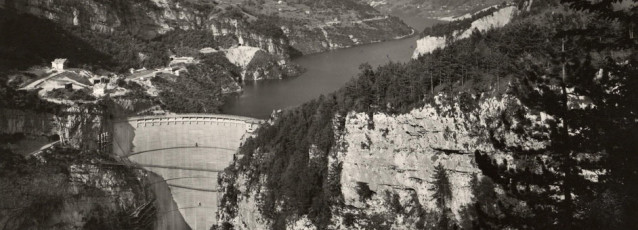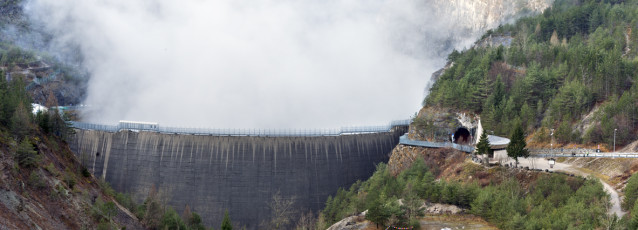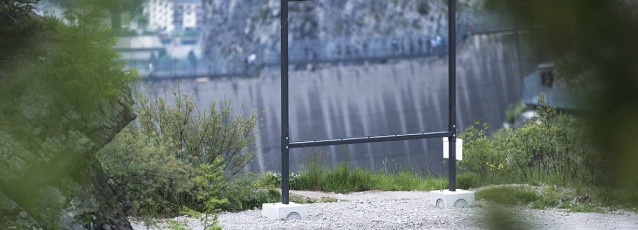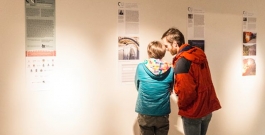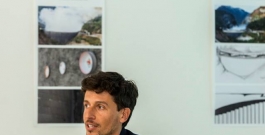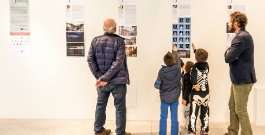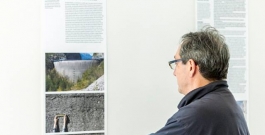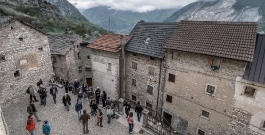On April the 30th the first phase of the International Artistic Contest Two Calls for Vajont, launched in June 2014 by Dolomiti Contemporanee drew to a close.
The Contest was conceived as an open platform of reflection on the territory of the Vajont and on its terrible history (October the 9th 1963), and as an opportunity to rethink, through the production of a series of renovating images, the landscape and some of the main symbols of that history today, transforming them from still objects-memories of the tragedy into active and shared “construction sites” of the mind and spirit.
Twocalls has gathered opinions and ideas from people, and projects from artists for over a year: every word, every project was needed to build a frame of cultural awareness. The contest isn’t a wall nor a dam, but a perspective, a flux of perspectives, a web of purposeful thoughts, morphed into images.
Why have art and culture demanded to come here to say something? Because art and culture, simply have to exist, always, in every context. It is imperative that they do, especially in places of conflict, in critical territories.
Art and culture are word and spirit of the human being, and the human being who is the maker of their own destiny mustn’t ever forget, nor extinguish themselves.
Art not only has the right to get into every critical context with its vital attention: it’s its duty.
The artists, architects, designers, all the people who took part in the Contest, aren’t strangers to this context at all, since they have responsibly decided to come inside it.
The Vajont tragedy isn’t a private one: instead, with its terrible and extraordinary emblematical, involves the human, each human, every human.
And now the human beings, armed with their own sensibility, have come back to this land, to talk with its landscape ad inhabitants about the past, present, and future.
The history of the Vajont isn’t the history of a tragedy that happened in an instant: it’s the story of a process of subtraction and loss which lasted decades, that has seen the people of this land struck, first, and then abandoned.
But no human is abandoned when other humans come to share with them thoughts, memories, and places that keep on existing, like history itself.
This is what is, and will continue to be in the next few months, Twocalls: a call for all the human beings, which the artists have chosen to share.
173 the submissions by April the 30th, 108 the projects for a call for a line, and 65 for a call for a wall.
The Selection Committee inside of Dolomiti Contemporanee has selected 75 of them: they are the projects involved in the finals, published and thus viewable and open to comments, in this website (here the a call for a line projects, and here the a call for a wall ones).
By the end of May, the Jury of the Contest will work on these 75 projects, to determine the four winning artworks, that is to say, the two that are going to be realised, and the two to which the Special Dolomiti Contemporanee Prize will be awarded.
Download the complete list of submitted projects.
–
Il 30 aprile si è conclusa la prima fase del Concorso Artistico Internazionale Two calls for Vajont, ideato da Dolomiti Contemporanee e lanciato a giugno 2014.
Il Concorso è stato concepito come una piattaforma aperta di riflessione sulla terra del Vajont e sulla sua storia terribile (9 ottobre 1963), e come un’opportunità per ripensare oggi, attraverso la produzione di una serie di immagini rinnovative, il paesaggio ed alcuni dei principali simboli di quella storia, trasformandoli, da immobili oggetti-memoria della tragedia, in cantieri, attivi e condivisi, della mente e dello spirito.
Per oltre un anno, Twocalls ha raccolto le opinioni e le idee delle persone, ed i progetti degli artisti: ogni parola, ogni progetto, è servita a crescere un edificio di consapevolezza culturale. Esso non è né un muro, né una diga, ma una prospettiva, un flusso di prospettive, una rete di pensieri propositivi, trasformati in immagini.
Perché l’arte e la cultura hanno preteso di venire qui, a dire qualcosa? Perché l’arte e la cultura, semplicemente, debbono esistere, sempre, in ogni contesto. è necessario che esse siano, soprattutto negli spazi del conflitto, nei territori della criticità.
L’arte e la cultura sono la parola e lo spirito dell’uomo, e l’uomo che è l’artefice del proprio destino, non deve dimenticare mai, né spegnere, sé stesso.
L’arte non solo ha il diritto di entrare, con la propria attenzione vitale, in ogni contesto critico: essa ha il dovere di farlo.
Gli artisti, architetti, designer, le persone tutte che hanno partecipato al Concorso, non sono in alcuna misura estranei a questo contesto, in quanto hanno deciso responsabilmente di entrare in esso.
La tragedia del Vajont non è una tragedia privata: essa, nella sua terribile e straordinaria emblematicità, coinvolge l’uomo, ogni uomo, tutti gli uomini.
Ed ora gli uomini, armati delle proprie sensibilità, sono tornati in questa terra, a parlare con il suo paesaggio e con i suoi abitanti, del passato, e del presente, e del futuro.
La storia del Vajont non è la storia di una tragedia avvenuta in un istante: è la storia di un processo di sottrazione e perdita, durato decenni, che ha visto gli uomini di questa terra prima colpiti, e poi abbandonati.
Ma nessun uomo è abbandonato, quando altri uomini vengono a condividere con lui i pensieri, le storie, le memorie, ed i luoghi, che continuano ad esistere, come la storia stessa.
Questo è voluto essere, è, e nei prossimi mesi ancora sarà, Twocalls: una chiamata a tutti agli uomini, che gli artisti hanno deciso di condividere.
173 le candidature al 30 aprile, 108 i progetti per a call for a line, 65 per a call for a wall.
Il Comitato di selezione interno a Dolomiti Contemporanee ne ha selezionati 75: sono questi i progetti finalisti, pubblicati, e quindi visionabili e commentabili, in questo website (qui i progetti di a call for a line; qui i progetti di a call for a wall).
Entro il mese di maggio, la Giuria del Concorso lavorerà su questi 75 progetti, per determinare le quattro opere vincitrici, ovvero le due che saranno realizzate, e le due a cui verrà assegnato il premio Speciale Dolomiti Contemporanee.
In seguito, si lavorerà a definire le modalità di realizzazione delle opere vincitrici.
Scarica la lista completa dei progetti inviati.
12/03/2021
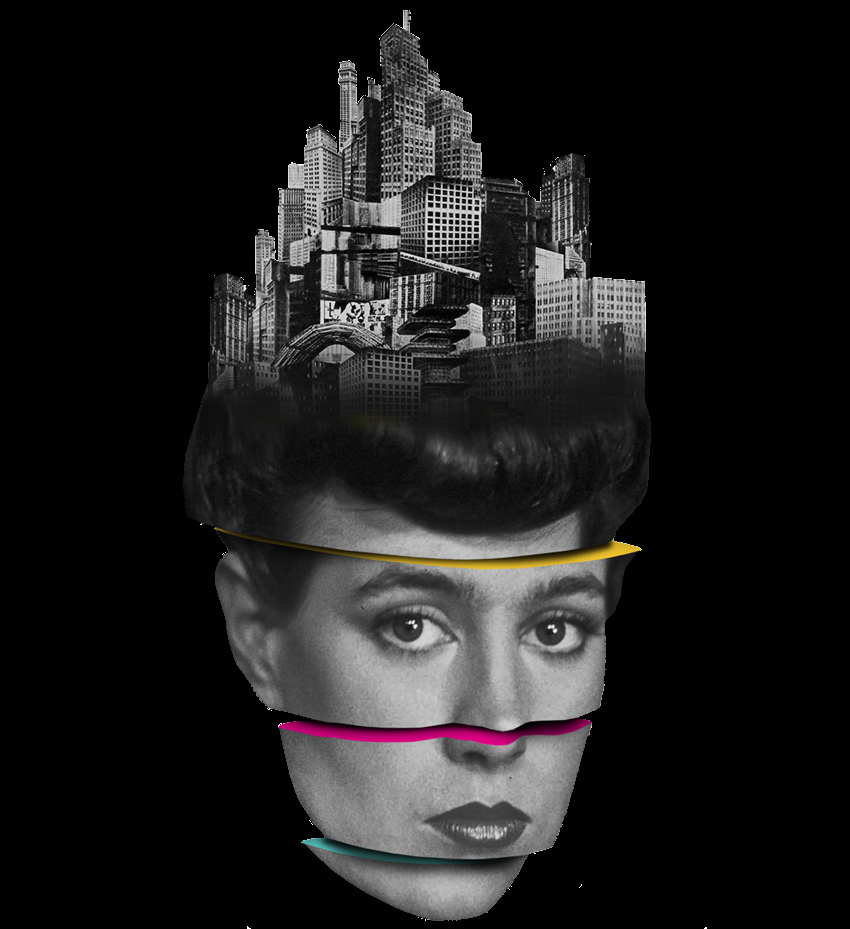
Resilient Communities
Italian Pavilion at the Biennale of Architecture 2021
17. International Architecture Exhibit – Venice’s Biennale.
Arsenal – Tese delle Vergini
May 22nd/November 21st 2021
Vernissage: Friday, May 21st
Public opening: Saturday, May 22nd, 10:00 AM – 7:00 PM
22/02/2021
Venerdì 26 febbraio 2021, ore 10:00-12:00, panel webinar:
Two Calls for Vajont, Concorso Artistico Internazionale: fase _restart.
L’arte pubblica come pratica rigeneratrice per paesaggio e territori.
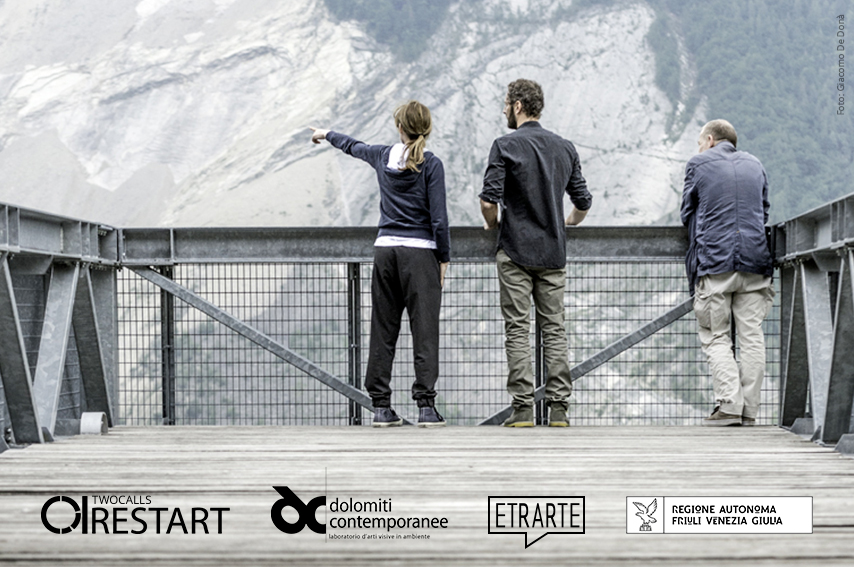
Il Concorso Artistico Internazionale Two Calls for Vajont è stato lanciato da Dolomiti Contemporanee nel 2014.
14/07/2018
dolomiti contemporanee and the Vajont area are in arcipelago italia, the Italian Pavillion of the 16th venice’s biennale of architecture.
“Arcipelago Italia. Projects for the future of the country’s interior territories” is the title of the project by curator Mario Cucinella for the Italia Pavillion at the 16th International Architecture Exhibition of the Venice Biennale, promoted by Direzione Generale Arte e Architettura contemporanee e Periferie Urbane, MiBACT.


